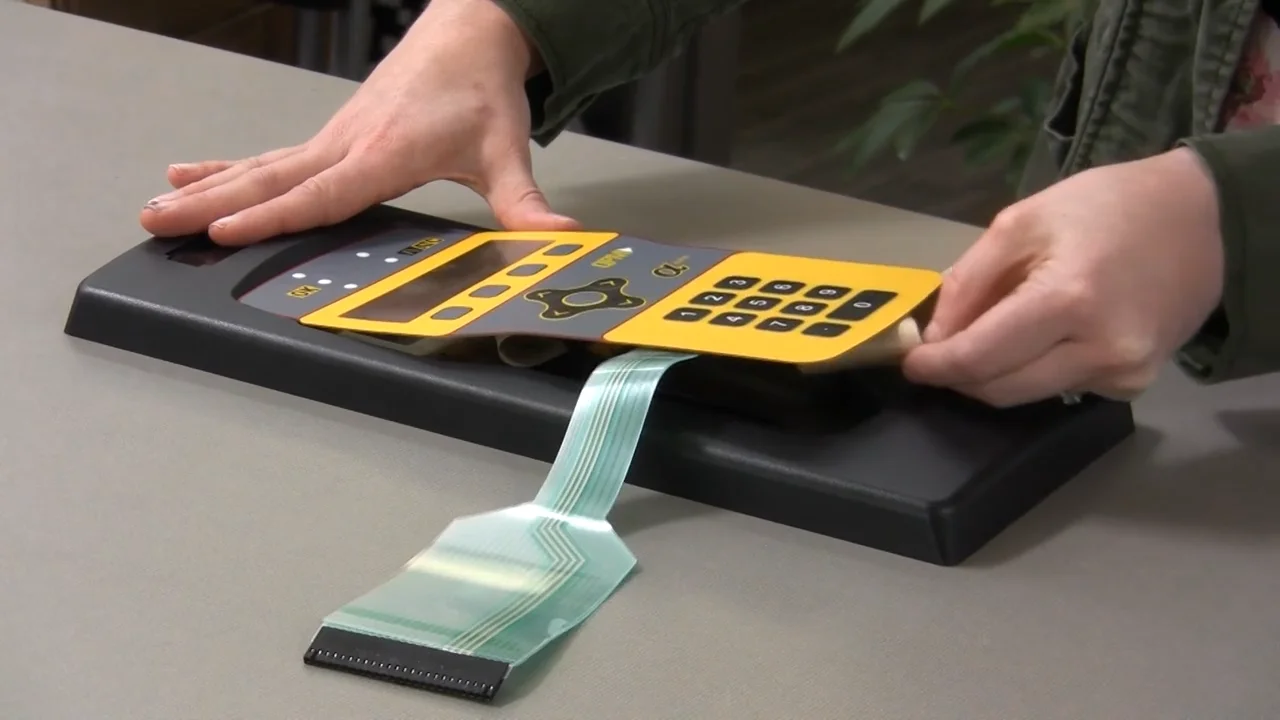Comprehending the Capability of Membrane Layer Switches Over for Individual User Interface Tools
The capability of membrane changes represents a significant improvement in user interface layout, incorporating effectiveness with visual convenience. As industries progressively focus on individual experience, comprehending the nuances of membrane layer switch modern technology comes to be crucial.
What Are Membrane Buttons?
Membrane buttons are innovative interface devices that promote user interaction with digital devices. These flexible components contain numerous layers, including a graphic overlay, spacer, and a printed circuit layer. The style enables a smooth integration into numerous digital devices, boosting both the visual and functional elements of interface.
Membrane buttons are commonly utilized in a wide variety of applications, from home appliances to commercial machinery and clinical devices. Their building generally includes a slim account, making them an excellent selection for portable designs. The tactile comments provided by these switches can be engineered to satisfy specific user choices, making certain reliable communication between the individual and the device.
Toughness is an additional substantial benefit of membrane switches, as they are immune to dust, wetness, and chemicals, which improves their lifespan sought after settings. In addition, these buttons can be personalized in regards to shape, dimension, and visuals style, enabling branding and user-specific functions. Generally, membrane layer switches stand for a practical solution for enhancing customer experience in electronic gadgets, integrating functionality with visual appeal in a reliable way.
How Membrane Layer Switches Job
Operating on a straightforward concept, membrane changes utilize a layered building and construction to register customer input effectively. Each switch is composed of numerous layers, including a printed circuit layer, a spacer layer, and a top visuals layer, which are designed to function with each other perfectly. When a user presses the top layer, it presses the spacer layer, bringing the conductive elements of the circuit layer right into call with each various other.
This contact produces a shut circuit, signifying the device to carry out a particular function. The design permits various arrangements, including tactile responses, which can boost the individual experience by supplying a physical experience upon activation. The materials used in membrane switches typically include versatile substratums, such as polyester or polycarbonate, which ensure sturdiness and strength versus wear and tear.

Secret Advantages of Membrane Layer Buttons

One more significant benefit is their density. Membrane layer switches are thin and lightweight, which makes it possible for manufacturers to save room in their gadgets without compromising performance. This function is especially helpful in applications where weight and volume are essential considerations.
In addition, membrane layer switches are resistant to dirt, wetness, and chemicals, enhancing their sturdiness. This durability extends their lifespan and decreases the demand for constant replacements, leading to cost financial savings gradually.
Additionally, the responsive comments offered by membrane layer switches can be enhanced to boost user communication. They can include functions such as elevated buttons or audible clicks, boosting usability and individual experience.
Applications Throughout Industries
Interface tools utilizing membrane layer buttons are prevalent in a broad range of sectors, showcasing their adaptability and performance. Membrane Switch. In the clinical industry, membrane layer switches are essential to devices such as analysis tools and person monitoring systems, where their durability and ease of cleaning are vital for maintaining health criteria. Likewise, in the auto sector, these switches are employed in control panel controls and infotainment systems, providing a sleek and modern user interface for individuals.
Additionally, the consumer electronics field advantages from membrane buttons in home appliances and handheld tools, where compact design and straightforward user interfaces improve user experience. Industrial applications also utilize membrane layer switches over for control board in machinery and automation systems, highlighting their toughness and resistance to rough settings.
In the aerospace and protection markets, membrane layer switches are utilized in cabin controls and tools, where dependability and performance under extreme problems are see this extremely important. Furthermore, the video gaming industry increasingly includes membrane layer switches in controllers and gallery equipments, adding to an appealing user experience. On why not try here the whole, the versatility of membrane layer changes allows their extensive use throughout countless markets, highlighting their significance in modern-day interface design.
Future Fads in Membrane Switch Modern Technology

Furthermore, using innovative materials, such as polycarbonate and polyester movies, is anticipated to rise, offering enhanced durability and resistance to environmental stressors. These products add to the general durability of membrane switches, making them appropriate for harsher commercial applications.
Furthermore, the consolidation of smart innovation, consisting of IoT connectivity, will certainly enable membrane switches to interact with various other tools and systems, assisting in an extra interactive user experience. This trend aligns with the growing demand for clever tools throughout different sectors, from healthcare to consumer electronics.
Lastly, customization options are anticipated to increase, enabling makers to produce bespoke options customized to particular user needs and choices. These growths will certainly place membrane switches as vital elements in the evolution of interface technology.
Conclusion
In final thought, membrane layer changes represent a crucial improvement in user interface innovation, offering a trustworthy and versatile remedy for diverse digital applications. As advancements in material scientific research and touch sensing modern technologies continue, the performance and applicability of membrane layer switches are anticipated to broaden, reinforcing their importance in modern-day electronic gadgets.